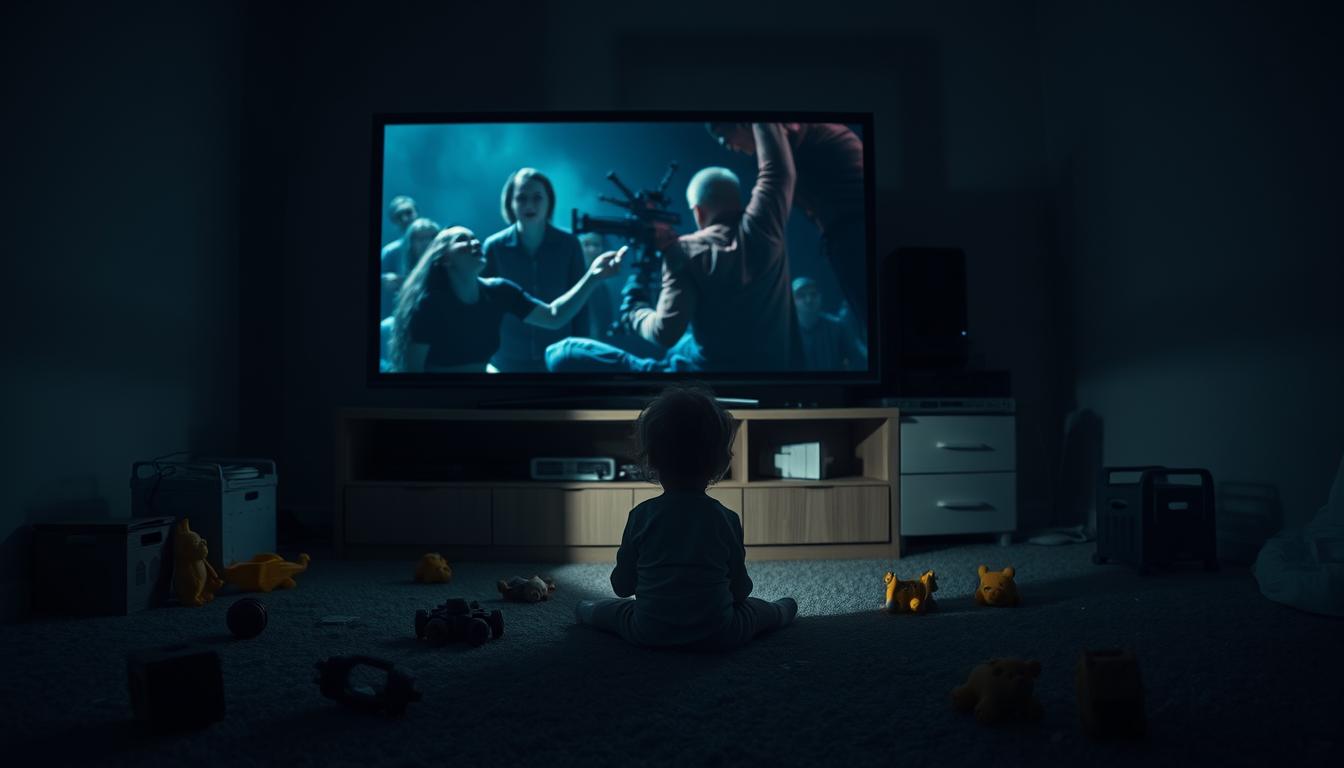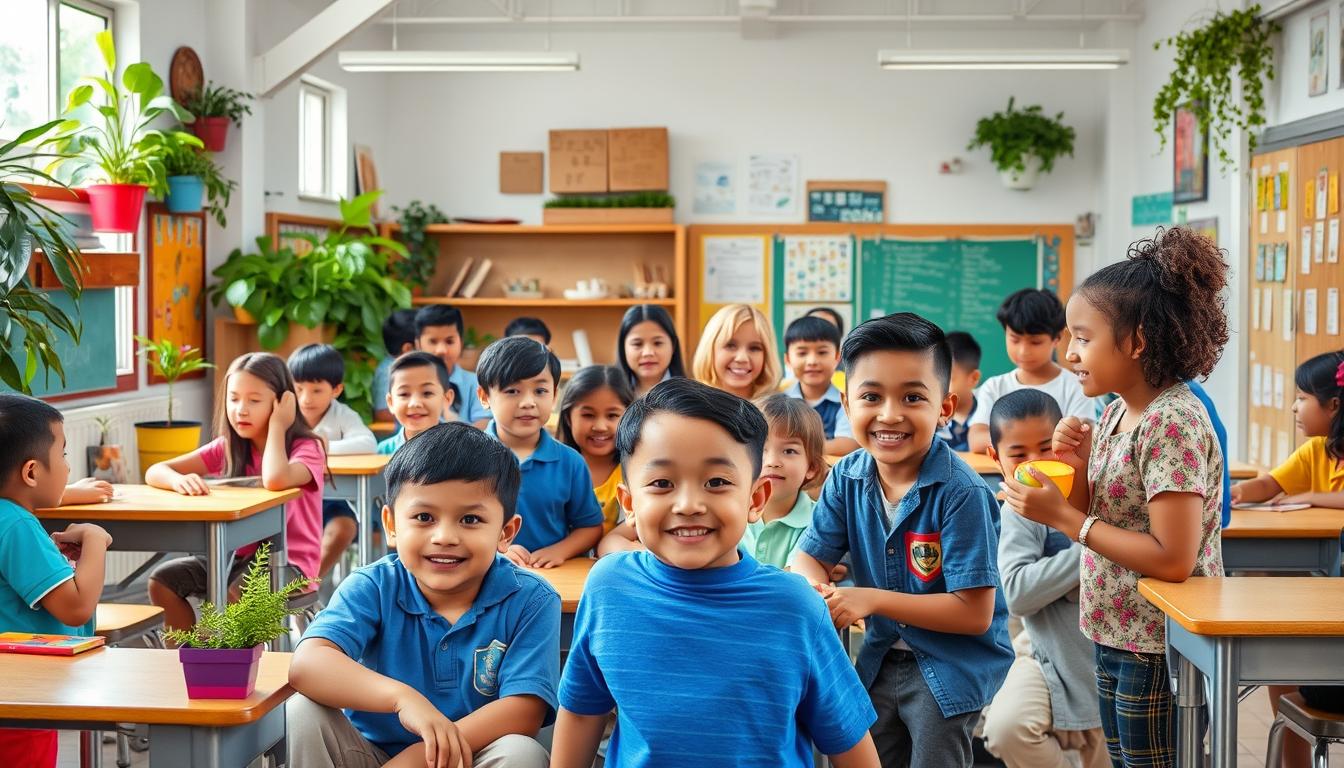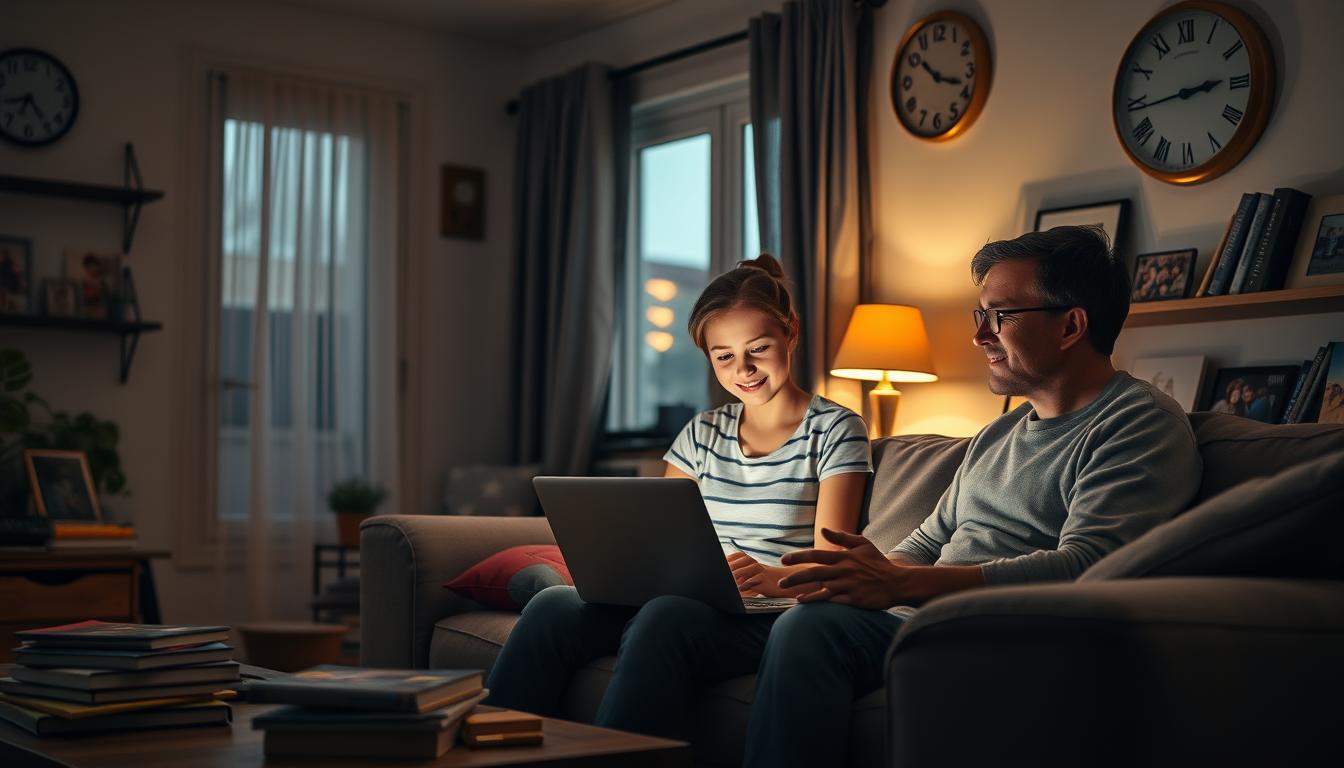As a parent and researcher, I’ve seen how media violence affects our kids. Today’s media shows more violent scenes than ever before. This is true for TV, movies, and even video games.
Our children live in a world where violent images are everywhere. The effects of media violence on kids are real and serious. It can change how they act, feel, and think.
It’s important to know how media violence affects our kids. Studies show it can change how they see the world and interact with others. This is why we need to protect our children’s minds and hearts.
Key Takeaways
- Media violence can significantly impact child development
- Digital platforms increase exposure to violent content
- Children are more vulnerable to media influence
- Early intervention and monitoring are essential
- Parental guidance plays a critical role in media consumption
Understanding The Impact of Media Violence on Children
Today’s kids face a lot of media violence. Studies show it can harm their minds and behavior. It’s key for parents and teachers to know how it affects them.
Violent media and child development are closely linked. There are many ways it can harm kids.
Short-term vs Long-term Effects on Behavior
Watching violent TV can change kids’ behavior right away and for a long time. Short-term effects include:
- Increased irritability
- Heightened emotional reactivity
- Temporary aggressive impulses
Long-term effects are even scarier. Kids who watch a lot of violent media might:
- Get used to violence
- Learn to solve problems by being aggressive
- Feel less empathy for others
Emotional and Psychological Responses
“Media violence can fundamentally alter a child’s emotional landscape.” – Dr. Elizabeth Roberts, Child Psychology Researcher
Psychological reactions to violent media vary. But common ones include:
| Emotional Response | Potential Manifestation |
|---|---|
| Anxiety | Increased fear of real-world threats |
| Depression | Negative worldview development |
| Fear | Heightened stress responses |
Social Development Concerns
Watching violent media can hurt kids’ social skills. They might have trouble with:
- Understanding social cues
- Building real friendships
- Keeping their emotions in check
Knowing these effects helps parents choose better media for their kids.
The Evolution of Violent Content in Modern Media
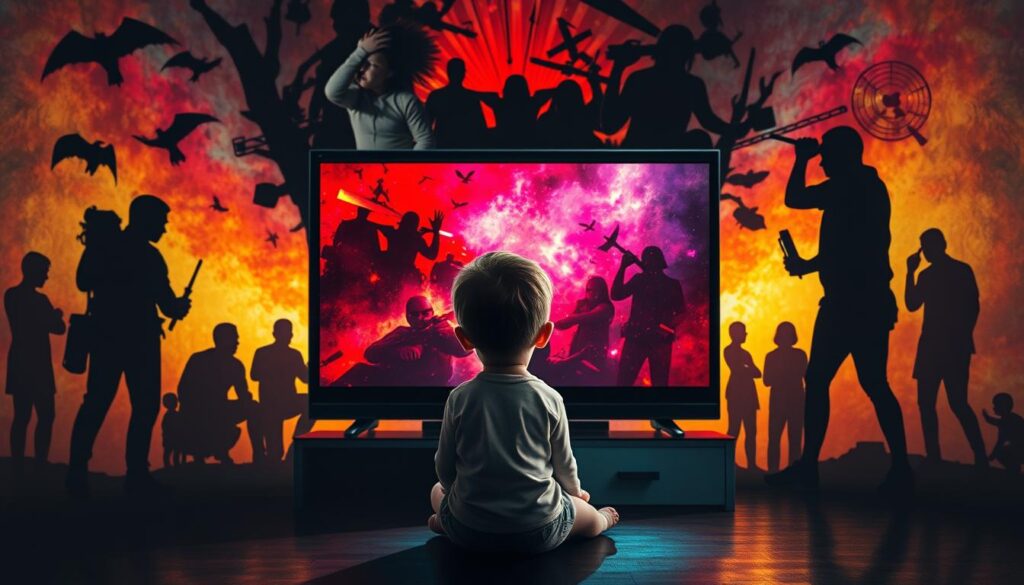
Media violence has changed a lot over the years. It started with small hints in early TV and now it’s more graphic and detailed. This change worries parents and teachers a lot.
Looking at how violent content has grown shows a clear trend:
- 1950s-1960s: Limited violent content with minimal graphic details
- 1970s-1980s: Introduction of more realistic violence in films and TV
- 1990s-2000s: Rise of violent video games and interactive media
- 2010s-Present: Hyper-realistic digital violence across platforms
Desensitization to Violence is a big concern now. Kids see violence everywhere – on TV, online, and in games. This makes it hard to understand how they consume media.
“The line between entertainment and graphic violence has become increasingly blurred.” – Media Research Institute
Interactive digital platforms have made things worse. Unlike TV, where you just watch, today’s media lets you take part in violence. This can make aggressive behavior seem normal.
Video games have changed how we see violence. With better graphics and more engaging gameplay, they offer intense experiences. This raises big questions about how they affect our minds.
How Exposure to Violence Affects Brain Development
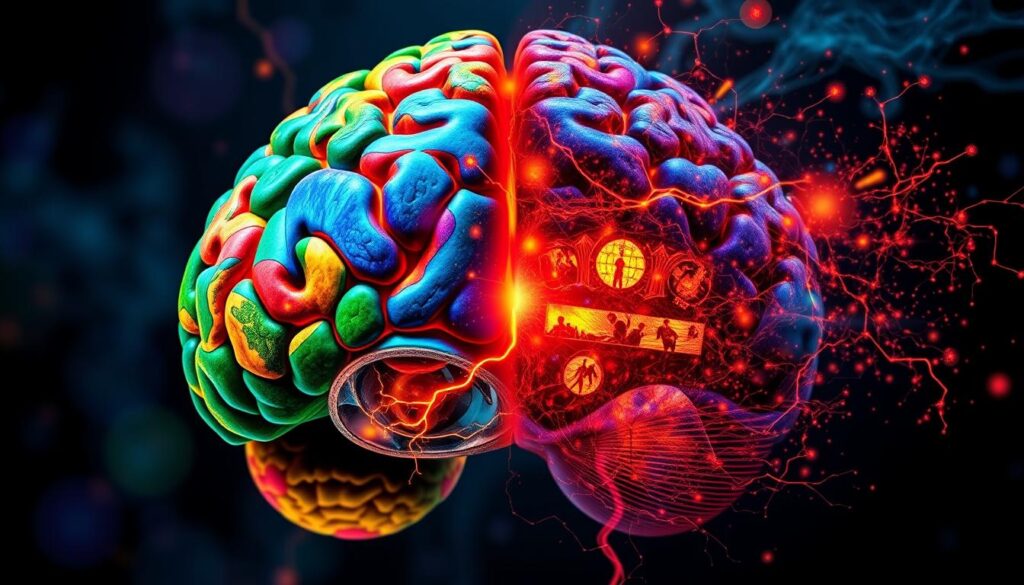
The Psychological Impact of Media Violence shows deep changes in the brain. Kids watching violent media see their brains change in ways that affect how they think and feel.
It’s important to look closely at how brain development and violent video games interact. This helps us understand the effects on young minds.
Changes in Neural Pathways
Watching violent media often changes how our brains connect. Studies show these changes can affect how our brains work. This might impact:
- Synaptic connectivity
- Neurotransmitter regulation
- Brain plasticity
Impact on Cognitive Functions
Violent media can change how kids think and solve problems. Kids who watch a lot of violent media might have:
- Shorter attention spans
- Worse problem-solving skills
- Less ability to make decisions
Emotional Processing Alterations
Studies show violent media can make kids less emotional. This means they might feel less for others and be more likely to act aggressively.
“The brain is a malleable organ, specially during childhood. What we expose children to can fundamentally reshape their neurological landscape.” – Dr. Elizabeth Kern, Neuroscience Researcher
| Media Type | Potential Neural Impact | Risk Level |
|---|---|---|
| Violent Video Games | High Neural Plasticity Alteration | High |
| Violent Television | Moderate Neural Connectivity Changes | Moderate |
| Violent Online Content | Emerging Neural Response Patterns | Variable |
Knowing these effects helps parents and teachers choose better media for kids. It helps protect their developing brains.
Breaking Down the Link Between Video Games and Aggressive Behavior
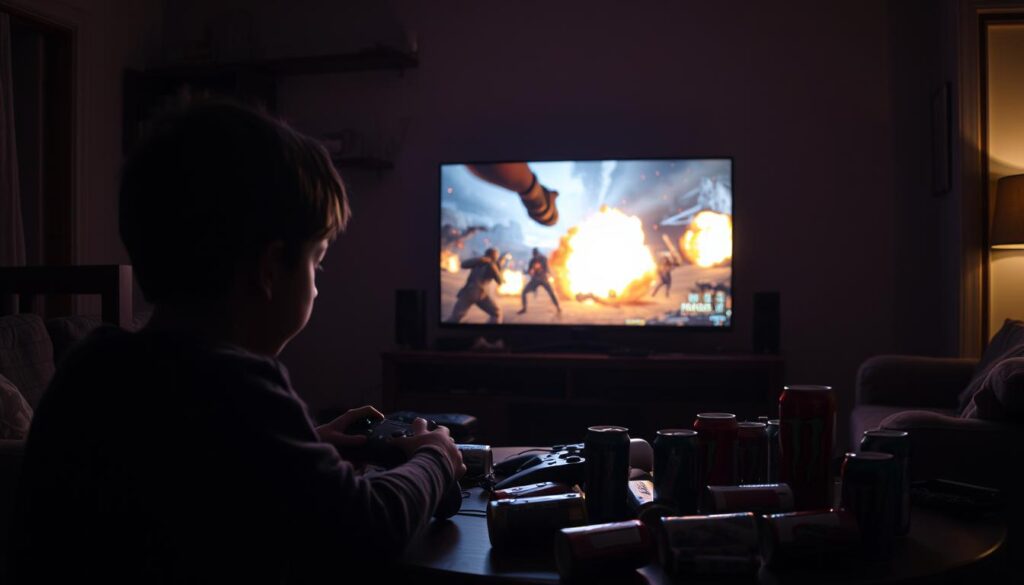
The link between violent video games and aggressive behavior is a hot topic. It’s something researchers and parents are deeply concerned about. Studying this helps us understand how children grow and stay mentally healthy.
Studies have found some important ways video game violence can affect kids:
- Increased exposure to violent game scenarios
- Potential desensitization to violence through repeated interactions
- Psychological triggers that may amplify aggressive responses
“Video games do not create violent behavior, but they can shape psychological responses to aggressive stimuli” – Dr. Amanda Roberts, Child Psychology Research Institute
Desensitization to Violence is a big worry. When kids keep seeing violent scenes in games, they might start to feel less upset by it. This could make them less empathetic and more likely to solve problems through aggression.
The effects can differ based on age and personality. Some kids are more resilient, while others might be more affected by negative changes in behavior.
| Age Group | Potential Risk Level | Recommended Screen Time |
|---|---|---|
| 6-9 years | High | Less than 1 hour daily |
| 10-13 years | Moderate | 1-2 hours daily |
| 14-17 years | Low | 2-3 hours daily |
Knowing these details helps parents and teachers find better ways to handle screen time. Mindful interaction and ongoing dialogue are key to reducing bad influences.
Practical Steps for Parents to Monitor Media Consumption
It’s tough for parents to keep up with media for their kids. They need good strategies to protect their children from bad content. This includes teaching media literacy and being proactive.
Parents are key in shaping their kids’ media habits. Knowing how to watch and manage what they see is important. It helps avoid bad effects.
Setting Age-Appropriate Guidelines
Setting clear rules about media helps kids watch wisely. Here are some tips:
- Set limits on screen time
- Check content ratings first
- Watch media together and talk about it
- Make some areas in your home media-free
Creating Healthy Media Habits
“Media literacy is not about restricting access, but about empowering children to critically understand content.” – Media Education Expert
Teaching media literacy is ongoing. I suggest teaching kids to:
- Spot manipulative content
- Get the context and message
- Tell the difference between shows and real life
- Ask questions about what they see
Using Parental Controls Effectively
Today’s tech has great tools for managing media. Use parental controls on devices, streaming services, and browsers. This makes the internet safer for your kids.
Remember, talking openly is the best way to guide your child’s media use.
Conclusion
Looking into media violence, I see how important it is for parents and teachers to get involved. They need to teach media literacy. This is because violent content can deeply affect kids in many ways.
It’s not about banning all violent media. Instead, we should make sure kids watch it in a safe, guided way. Talking to kids, checking what they watch, and teaching them to think critically are key steps. This helps them deal with the complex media world they face every day.
We need to work together to make a difference. Parents, schools, and media creators must join forces. By focusing on media literacy, we can teach kids to think about what they watch. This way, they can stay safe and make smart choices in a world full of media.
As we keep studying how media affects kids, one thing is clear. We must be proactive and well-informed. By talking openly, staying up-to-date, and teaching smart media habits, we can protect our children’s minds and hearts.

